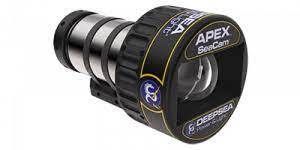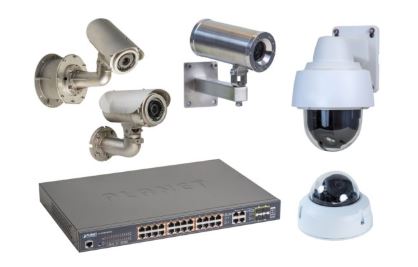BlueZone partners with over 50
world-leading original equipment
manufacturers and systems providers
Teledyne Bowtech
Teledyne Bowtech
Contact BlueZone for further information.
Bowtech Burns Bright for Sydney-Kormoran Project
During World War II, the Australian warship HMAS Sydney (II) encountered the German raider HSK Kormoran and after a short but fierce battle, both ships sank, taking with them all 645 crew from the Sydney and almost 100 crew from the Kormoran. In 2015, researchers from Curtin University, Dr Andrew Woods, Dr Andrew Hutchison, and Mr Joshua Hollick worked with the WA Museum to use two ROVs from offshore services company DOF Subsea to conduct a detailed 3D imaging survey of the two wreck sites. The ROVs were fitted with new-to-market Teledyne Bowtech lights and cameras capable of operating successfully at 2500m underwater. The team collected half a million photographs and 300 hours of high definition video footage – in total some 50 terabytes worth of data.
The equipment used to survey the site included twenty Bowtech LED-V-Series lights which provided 400,000 lumens of light (equivalent of 500 home light globes) into what is normally a totally dark abyss. A Bowtech Surveyor 3DHD camera and Surveyor (2D) HD camera captured the haunting scene of the two wrecks. The ROVs were also fitted with fourteen digital still cameras enabling multiple images of the shipwrecks to be captured with fewer passes of the ROVs. Dr Woods said that, to his knowledge, this was the most complex lighting and camera system ever launched for a deep-water photographic expedition, “The Bowtech lights and cameras served us very well,” said Dr Woods, “The unique lighting and camera system that we developed enabled us to capture more images with fewer operating hours of the ROVs.” Importantly, real-time interface of digital still images captured subsea to the surface was enabled so that the expedition could be sure that the data captured was of high quality and suitable for the project needs.
 |
| BlueZone Group GM Perth, Mark Musarra with CTO Darren Burrowes and Dr Andrew Woods at the Curtin HIVE facility with an image of the ROV equipped with the custom light/camera array. |
Key Features
Up to 25-hour mission duration
Speeds up to 4.2 knots
Increased module payload capacity
Search and recovery
Hydrography
Deep sea mineral exploration
Marine & Fisheries research
Product Enquiry
Related products
DeepSea's Super Wide-i SeaCam has a compact design with 185° Field of View to capture the entire scene when used for situational context or ROV piloting purposes.
Read moreDeepSea's Apex® SeaCam® is capable of 4K UHD and operates in multiple HD formats. Proprietary corrector optics provide superior imaging performance with a low-distortion 70° HFOV. A faceplate illumination of 0.56...
Read moreDigital IP Vessel CCTV Systems, External Compact Marine PTZ Camera, External Marine Fixed Camera - DNV GL Type Approved, External Marine Fixed Camera - Harsh EMI, External Marine Fixed Camera...
Read moreRelated Articles
Ahead of the Tide: BlueZone’s Landmark IndoPAC 2025 Showcase
Celebrating 25 Years of Sovereign Capability The Indo Pacific International Maritime Exposition stands as the region’s premier showcase for commercial maritime and naval defence innovation—bringing together leaders from defence,...
Read MorePartnering for Performance: BlueZone Supports Kraken Robotics in Advancing KATFISH Capability
BlueZone Group to become Kraken’s Australian Sales Representative, Enhancing Sovereign Support for Cutting-edge Synthetic Aperture Sonar Systems We are thrilled to announce BlueZone Group have signed an agreement...
Read MoreSeeByte and BlueZone Group Forge Strategic Alliance to Strengthen Australian Naval Capabilities
BlueZone Group is proud to announce our appointment as the official Australian representative for SeeByte, a UK-based leader in advanced maritime defence and uncrewed systems technology. This strategic partnership marks...
Read More




